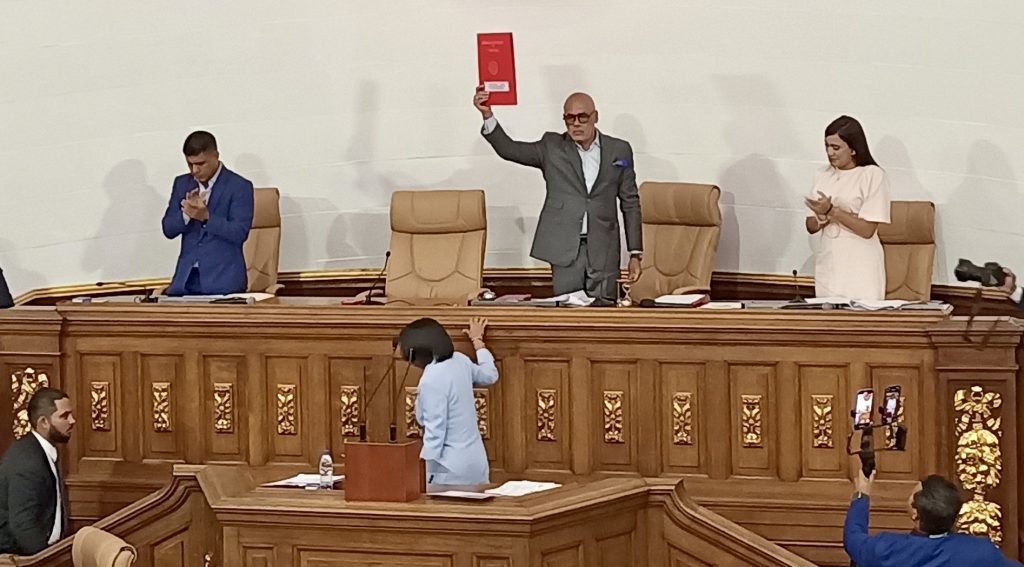MIGUEL ÁNGEL GARCÍA
THE ROLE OF ARTIFICIAL INTELLIGENCE IN THE PRODUCTION OF JOURNALISTIC CONTENT

(This text is the presentation given by Miguel Ángel García at the VII Congress of Media Editors of the European Union, Latin America and the Caribbean, held from March 18 to 21, 2024 in Madrid and Brussels)
One of the issues that currently has the greatest influence on journalistic work is the role of technologies. In particular, I am going to talk about Artificial Intelligence.
But first, beyond how it is already influencing our profession, I would like to begin by highlighting how difficult it is to assimilate and process the large amount of information of all kinds, related to artificial intelligence, that reaches our newsrooms on a daily basis. The fact is that both reconfirm something that we already knew, but that we sometimes forget: we are immersed in the fourth great revolution, the technological revolution, of which the development of Artificial Intelligence is now the spearhead.
This huge amount of information about AI that reaches the newspapers every day is directly related to the increase that is occurring in the registration of the .ai domain worldwide. In fact, last February this domain soared 378% over January.
While the .com extension continues to be the absolute leader with more than 160 million domains registered out of a total of more than 350 million, the advance of the .ai domain gives us an idea of the growth of AI-related products and services behind it, which are reaching the general public in a matter of weeks.
What’s more, the .ai extension was initially assigned to the State of Anguilla, and the government of this small country decided to release it 14 years later, in 2009, opening its use to everyone. As a result, this small Caribbean country, with an area similar to half the size of the city of Washington, and a population of just 16,000 inhabitants, has found in the registration of domains one of its main sources of income, expecting to exceed 28 million euros this year, almost 10% of its GDP.
And the fact is that the development of Artificial Intelligence is already a reality that we are just beginning to understand, and we, as journalists, are obliged to know it, as well as to analyze its repercussions and also to inform society of its uses and to assist them in the fundamental process of becoming familiar with them.
Generative AI is, for many technologists, a turning point in humanity. It is a computational system capable of generating knowledge and performing virtually any human task at a much faster and more disruptive level of implementation than the Internet ever was.
Focusing on the media world, many newspapers and magazines around the world are already using generative artificial intelligence to be more productive. And thanks to its contribution, human journalists in these media can do more research and leave aside other more documentary work.
Berrow’s Worcester Journal is considered one of the longest-running publications on the planet. The journal, first published in 1690, now functions as a free weekly printed sheet, also available online, containing news from the English city of Worcester.
As it happens, this masthead is one of the publications hosted by the UK’s second largest regional news publisher, which has opted to hire AI-assisted journalists to report local news. Its reality is very illustrative in framing the phenomenon on a global scale.
The UK weekly’s AI-assisted journalists use an in-house writing tool based on ChatGPT technology; an enhanced chatbot that relies on information extracted from text on the Internet.
Journalists enter “trusted content,” which could be described as mundane but necessary, such as committee minutes, which this tool transforms into a concise news story with the most relevant and essential of the document it describes and synthesizes.
While the AI technology-assisted reporter produces basic content, other journalists on this publication’s editorial team are free to go to court, meet with a councilman, or attend an event. This technology complements the traditional work of the journalist, while at the same time emphasizing the human factor of the journalistic storyteller. As its head comments, “AI cannot be at the scene of an accident, in a courtroom, at a council meeting, it cannot visit a grieving family or look someone in the eye and tell them they are lying. All it does is free up journalists to do more of that.”
And that’s precisely the big question most editors around the world are asking today. Instead of shying away from it or being afraid of it, and considering that it is here to stay, how can we take advantage of it?
A key benefit of applying AI in journalism is improved accuracy. Algorithms can analyze large amounts of data from a variety of sources, identifying trends and patterns that might go unnoticed by journalists.
Thus, if this resource is properly employed, we may find that this technology enables a more complete and accurate presentation of the events, news and realities it reports, thus raising the quality of the analysis of the information provided to readers.
In addition, news production through AI opens up the possibility of democratization in news coverage. Examples such as News Corp Australia, which produces thousands of articles weekly using generative AI, or the local newspaper in Nottinghamshire, UK, which experiments with AI to generate summaries of long articles, demonstrate how even smaller media can benefit from this technology, bringing more and better resources to their readers, while increasing their productivity and efficiency.
In the context of Spain, several media outlets are already taking advantage of AI to improve their efficiency and quality. For example, Medusa, a pioneering project of Vocento, uses automated journalism to generate information on the location of beaches and ski slopes.
For its part, El Confidencial has the bot AnaFut, “a robot in the form of an algorithm” that works as a sports journalist and that in the presentation of its profile “boasts” objectivity, to the point that it announces that its chronicles are structured solely on the basis of data, not subjective considerations. His work is therefore focused on the automatic writing of sports chronicles, while RTVE, in collaboration with the EFE agency and the startup Narrativa, is carrying out a pilot project for the automatic writing of texts and audiovisual automation.
Also in the public broadcaster, in Radio 3 Extra, RTVE has launched ‘‘Hiperia’, an innovative audiovisual content program created entirely by artificial intelligence. This virtual communicator addresses weekly issues of music and popular youth culture, being a pioneer in Spain and Europe. The AI generated the character and his voice, as well as the script and content of each program, which is verified entirely by editors of the channel.
Despite these and many other practical cases, the lack of trust in AI remains an unresolved issue in journalism, where it is recognized that AI can speed up the resolution of repetitive tasks, but where we are well aware that its use can pose ethical challenges, biases in the generation of content or conflicts with copyright.
In this sense, Professor Matthew Kirschenbaum of the University of Maryland, warns of what he calls “the Textual Apocalypse” by considering that artificial intelligence commoditizes the idea of content and devalues it, as opposed to what he calls “credit entitlement”, which is “the right to receive credit for contributions to a chain of collaborative inspiration, creation and recommendation of creative works”. In short, the recognition of those sources that inspire, or from which AIs drink, to do their work.
In relation to these sources of inspiration, let’s recall that last December the New York Times filed a lawsuit against OpenAI and Microsoft for copyright infringement, as the two technologies have used millions of articles of their property to train their great ChatGPT and Copilot language models, respectively.
The lawsuit did not reference any exact sum of money, though it does state that the defendants should be held liable for “billions of dollars in statutory and actual damages” related to “the unlawful copying and use of the Times’ uniquely valuable works” and are required to destroy any chatbot models and training data that use their copyrighted material.
Continuing with the more negative side of AI, Danielle Coffey, the president and CEO of the News/Media Alliance (N/MA), which represents more than 2,200 news, magazine and digital media publishers in the U.S., hits on the unfair competition these products make to journalism. It states that “AI results often contain summaries, excerpts and even full verbatim copies of articles written and fact-checked by human journalists. These products compete in the same market, with the same audience, and serve the same purpose as the original articles”.
And in this situation, he proposes the development of transparency measures around the use of copyrighted materials in AI technologies, as he believes that the public should know what AI models were trained on and, if they so wish, make the necessary evaluations to select more reliable or ethically sourced models. And, for their part, publishers have the right to know who copied their content and what they are using it for.
To conclude, I would like to bring to the table a recent study by the human resources company Randstad, which has calculated that the progressive incorporation of artificial intelligence tools in Spanish companies could lead to the disappearance of 2 million jobs by 2033.
The counterpart of this equation is that, in turn, there is the potential for new job opportunities to be generated, estimated at 1.6 million jobs, from the use of this technology. Therefore, analysts believe that the changes in the labor market could imply the loss of about 400,000 net jobs in the next ten years in our country.
In summary: the integration of artificial intelligence in journalism opens up very interesting possibilities. AI not only optimizes efficiency and accuracy in news creation, but also frees human journalists from complex and mechanical tasks such as data analysis and verification. And although there are ethical, legal and labor challenges, or concerns about bias, the truth is that publishing companies must make an effort to solve the various dilemmas that its application entails and adapt our profession to its irruption. Together we must be able to prevent this huge meteorite not only from destroying the life of this old and essential profession, but also from helping to make it more sustainable, more agile, more credible and of higher quality.
————
MIGUEL ÁNGEL GARCÍA, Spanish journalist, is director of Escudo Digital, an EditoRed partner.



